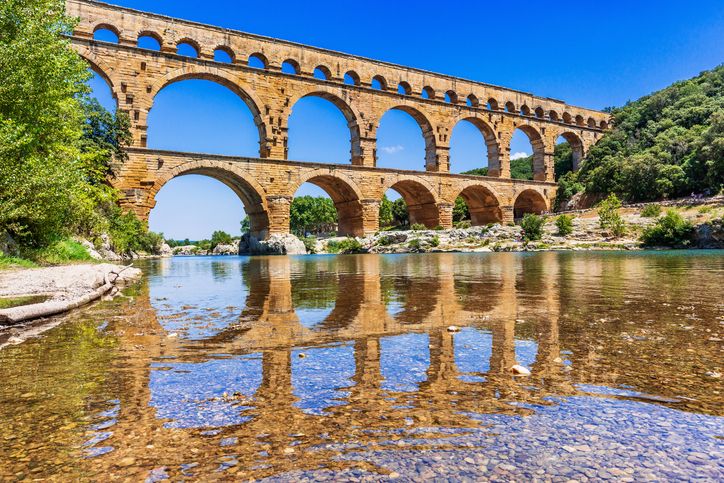
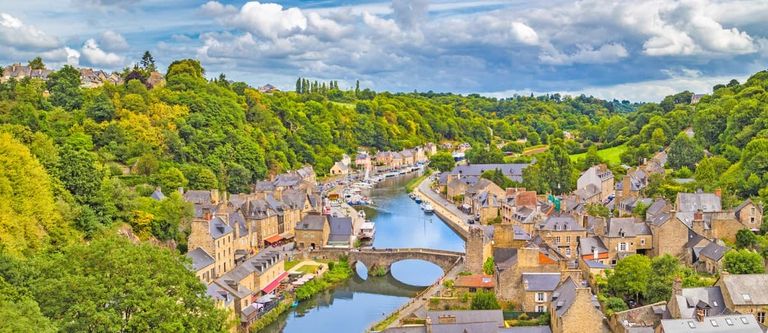
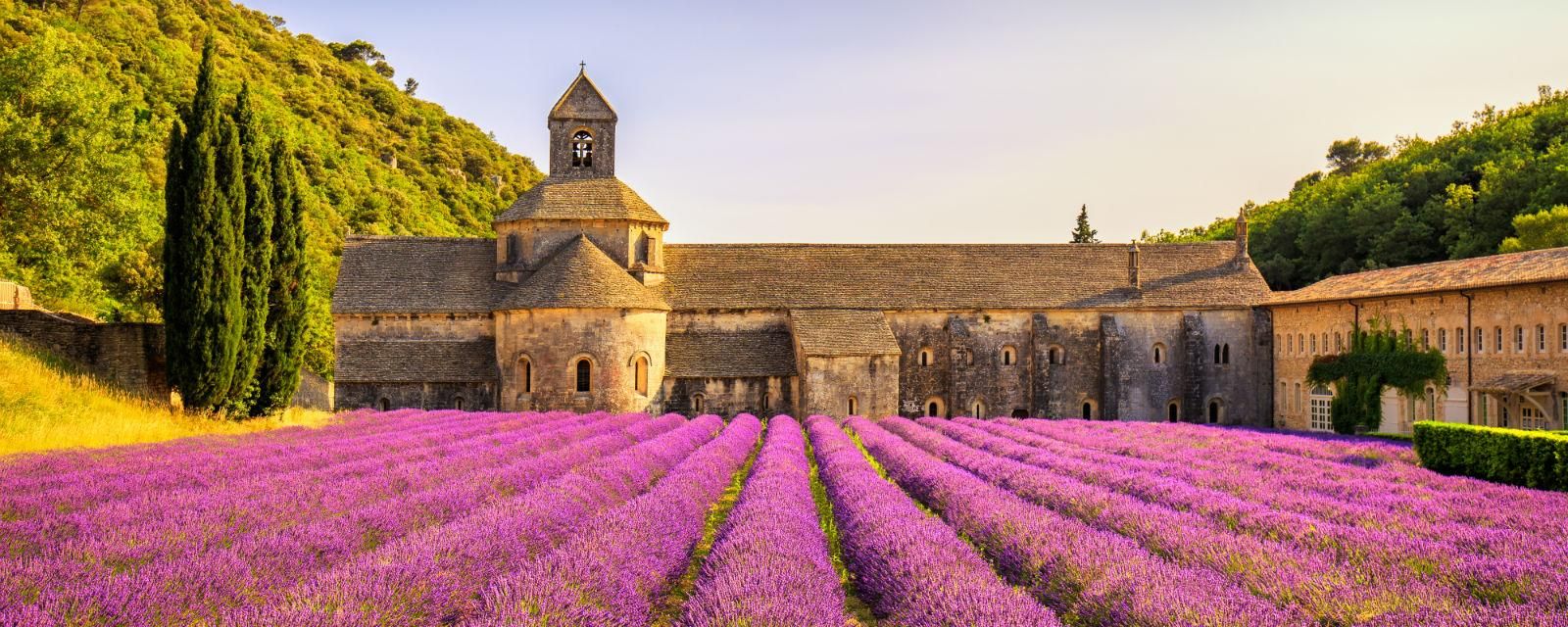
The South of France conjures up many different images to many different people – for some, it’s the foodie capital of the world, to others it’s a glamorous getaway in the French Riviera, a quaint historic retreat in the Dordogne or an adventure playground in the Camargue wilderness. It’s sometimes an overused phrase in travel – but here it really rings true – South of France villa holidays truly have something for everyone.
We’ve got an extensive collection of extraordinary villas to rent in the South of France, some even within easy reach of Spain and Italy.

Discover the Oliver’s Travels way, where style and character define every handpicked villa in The South of France. Our destination experts curate unique homes in beautiful locations that are perfect for families and guaranteed to ‘wow’.
Once you book a holiday, the service doesn’t stop there. Our Concierge Service means you’ll be in good hands to arrange in-house chefs, fridge stocking, housekeeping, and so much more, to make your stay truly extraordinary.
This sun-drenched corner of France is a quintessential summer getaway. The Côte d’Azur is laced with sultry beaches and glitzy seaside towns, while the cove-fringed coastline gives way to olive groves and forested mountains inland.
Rolling hills are combed with vines and rows of lavender, whose heady scent perfumes the air come June. Light pours from the sky and spreads across the hilltop villages like honey, stirring the imagination of artists – Matisse, Rénoir, Chagall, Cézanne, Picasso.
As well as a creative legacy of art studios and museums, the South of France has a historical legacy of Roman remnants. The region is scattered with remarkably well-preserved arenas and amphitheatres that nod to the time Provence was part of Roman Gaul. Languedoc has one of the most impressive Roman aqueducts around, as well as a sprinkling of Cathar castles.
Rent South of France villa and travel in luxury, perhaps with a pool, to put you in the heart of the action.
These diverse landscapes deliver a plethora of ingredients that creative chefs throw together in Michelin-starred restaurants – but you don’t have to spend a fortune to sample the delights.
Village bistros serve up bowls of steaming bouillabaisse and daube (beef stew), while weekly markets are laden with olives, vine peaches, plump aubergines, crusty baguettes, and wine and oil from local groves.
A mix of timeless glamour and natural beauty has long enticed the rich and famous to the South of France, and today it remains just as intoxicating.

Visit from early July for the full bloom of lavender.
While the Alps are, of course, a skiing hotspot, a network of signposted walking trails creates a great hiking destination once the snow melts.
For a luxury home-from-home, bypass jam-packed hotels in favour of the South of France villas for rent.
Many cities in the South of France, such as Aix-en-Provence, Arles and Avignon, offer museum passes.
The South of France encompasses a huge number of regions, and therefore the diversity in places to stay and explore is vast.
Check out our little guide to see which one piques your interest.
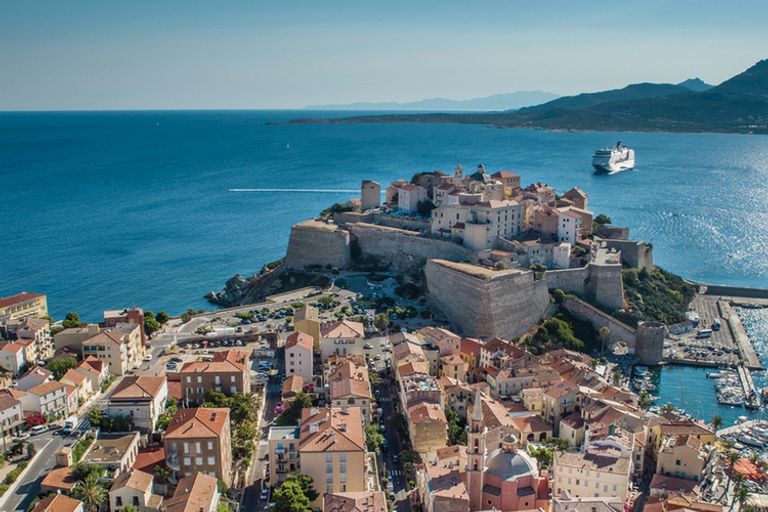
The place to visit if you’re after outdoor activities and breath-taking scenery. With half of the island falling into a park, you’re guaranteed epic views, lots of hiking trails and glittering bays. The landscape’s diversity is outstanding.
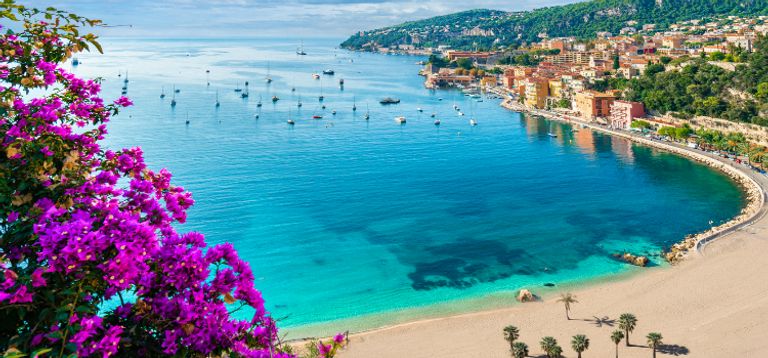
From the glitz and glam of Saint Tropez to the picturesque hillside town of Grasse, the French Riviera is equal parts quaint, glamorous and completely seductive. A coastline with beautiful beaches, villages and lapped by the sparkling Med, this is a magical place for a summer holiday.

Landscapes dappled with vineyards; this historic gem produces a third of France’s wines. Look beyond the vineyards and you’ll find everything from gorges and caves to forests and beaches. You’ll never be short of somewhere to explore in Languedoc.
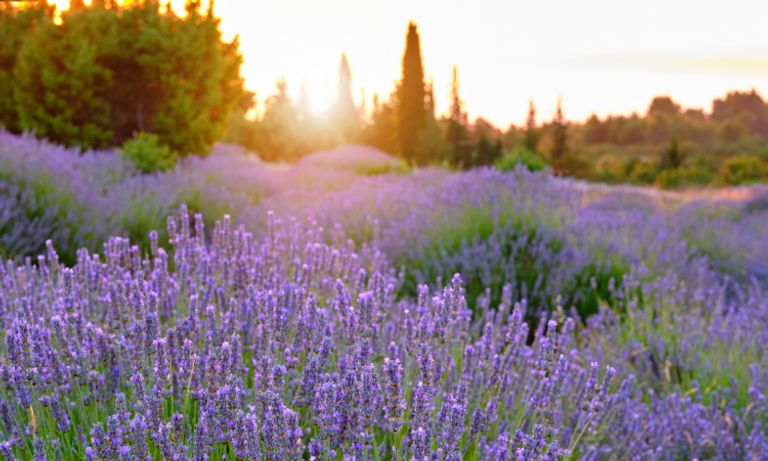
Mountainous vistas, lavender fields and ancient olive groves… Provence-Alpes is a feast for the senses. Across history, various peoples have left their footprints in this region and you’ll find age-old structures from Roman to Renaissance in its idyllic towns.
Kayak along the Verdon Gorge – Europe’s Grand Canyon.
Take the 10-minute ferry ride from Hyères to Porquerolles, then hire a bike and cycle across the tiny car-free island to Plage Notre-Dame; here you can snorkel and have a beach picnic.
Explore Montpellier on a colourful tram or a city bike.
Opt for one of the South of France villas with a private pool to allow kids to splash around in peace.
Family holidays in the South of France are a pleasure thanks to sunny days and plenty of distractions. From adventure parks and aquariums to hiking and biking, children won’t be short on ways to pass the time. The natural beauty of the region also helps; spend leisurely afternoons fruit-picking in cherry and apricot orchards or strolling through sweet-scented lavender fields.

The South of France shows learning doesn’t have to be confined to the classroom. Step inside the pages of a history book with trips to the imposing fortresses, Roman ruins and Cathar castles scattered across the region, where tales of feuds and royalty bring the past alive for young minds. Fire the imagination in Les Arènes, the glorious amphitheatre in Nîmes, or the medieval cité of Carcassonne, where the monumental ramparts and towers could be plucked from a Disney film. Cultural experiences don’t have to break the bank either: kids receive free entry to many museums and art galleries.
Make the most of the balmy Mediterranean climate with long days at the beach, most of which have balmy shallows for splashing about in, or adrenaline-pumping water-sports to keep teenagers occupied. A scattering of tiny islands just off the Riviera calls for Robinson Crusoe-style adventures, with snorkelling and cycling followed by picnics and swims in the sea.
The region’s weekly markets are laden with fresh fruit and vegetables, making cooking healthy meals at home a breeze, so pick a self-catering villa in the South of France to save money and hassle.
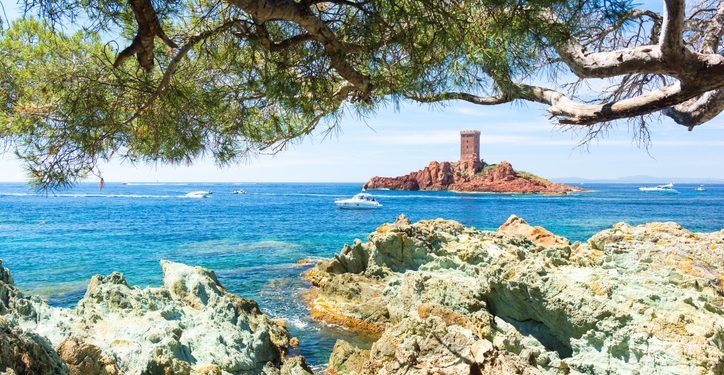
The French Riviera was immortalised by Brigitte Bardot when the film star graced the shores on location for And God Created Women in the 1950s. The movie catapulted both her and St Tropez onto the global stage, and the Côte d’Azur has remained the hottest destination for beautiful people ever since.
Today, holidaying hedonists moor up their pleasure boats and swim to the jewel-toned coves, glitzy beach clubs and golden swathes. While La Croisette is the best spot for people-watching, beyond Plage de Pampelonne are quiet pockets on the coast that are just as enthralling – but with fewer crowds.
To the west of Cannes is the Massif de l’Estérel, an extraordinary stretch of russet-red cliffs and natural coves. Continuing around the headland, the coastline gets sleepier, with the long ribbon of coast between Toulon and Marseille a tranquil, unpretentious alternative to the French Riviera.
Further still, the coastline of Languedoc becomes wilder and earthier – a land of wild flamingos and deserted beaches. Plenty of our properties are located conveniently close to beaches to save time and stress with public transport or traffic. Check our collection of South of France villas near the beach and the 10 best beaches in the South of France.
At the foot of a tall stone staircase just outside La Ciotat, La Calanque de Figuerolles is a hidden inlet where in-the-know French families picnic on the beach and groups of teenagers dive off the cragged rocks.

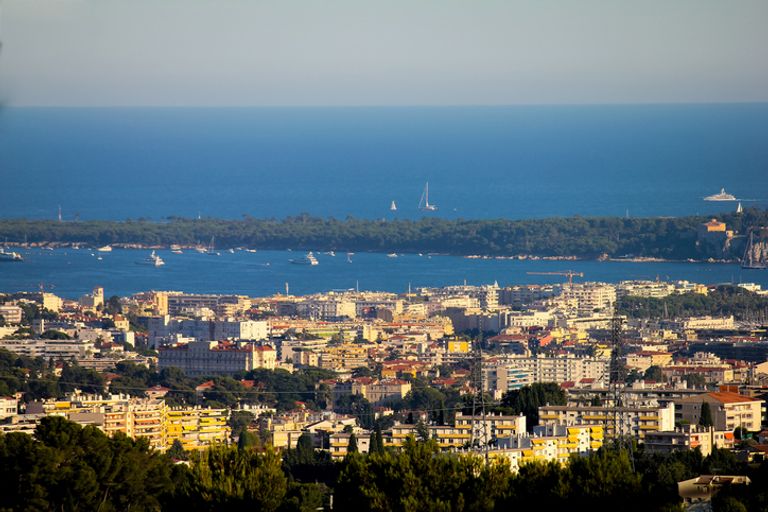
Just a 15-minute ferry ride from Cannes, the largest Lérins Island is laced with sand and fine-pebble beaches, backed by pine forest and eucalyptus-scented trails. Our favourite is the pebblestone Plage des Pierres Haute, hugging the southern coast.
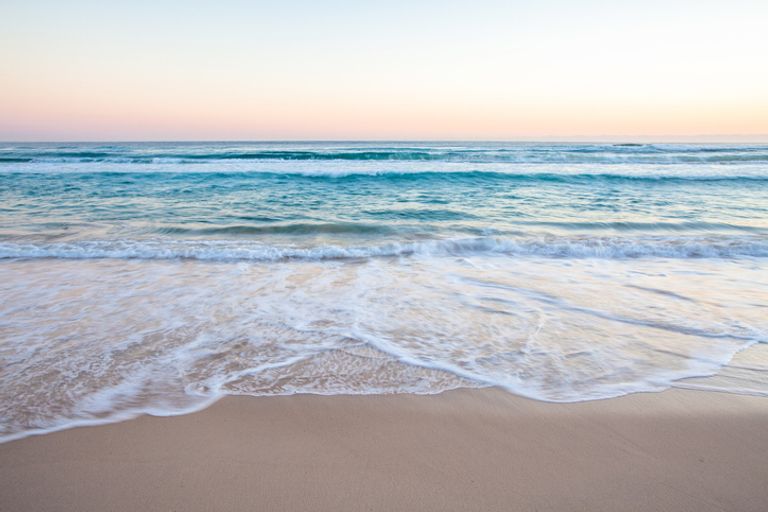
Pampelonne is a heady hangout with beach clubs and bars galore. Avoid the crowds and instead visit Plage des Salins – the last beach before Pampelonne. This wilder creek is quieter than its well-known neighbour, with an excellent waterside restaurant.
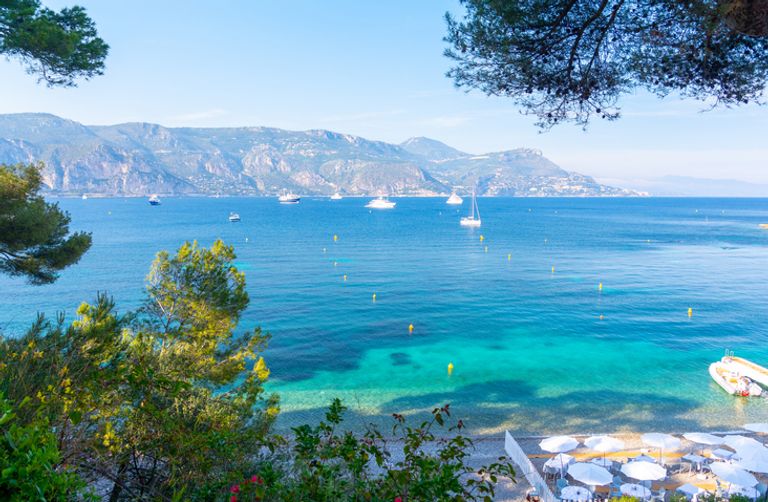
A favourite of Pablo Picasso, this tiny pebbly cove was named for his daughter. Spend leisurely mornings snorkelling or stand-up paddleboarding through the limpid waters, before feasting on day-fresh seafood at the renowned beachfront restaurant.
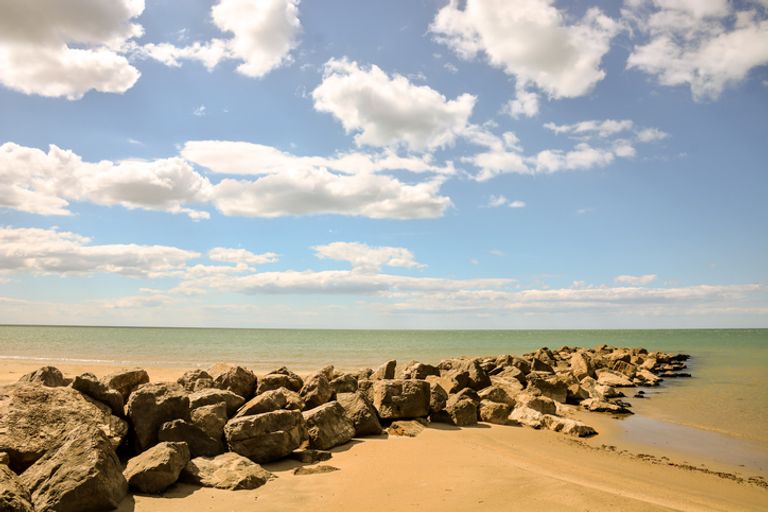
Le Cap d’Agde is known as the “Black Pearl” of Languedoc for its charcoal-coloured basalt architecture. Wide, sandy stretches hug the coast; part of which is the biggest naturist resort in Europe. Ancient Greek bronzes found underwater can be seen in Musée de l’Ephèbe.
In the 1960s Jean Cocteau transformed an abandoned limestone quarry in Les Baux-de-Provence into a cultural hub, and today it hosts the Carrières de Lumières, a spectacular light show where iconic artworks by Picasso, Michelangelo and Monet are projected onto the walls.
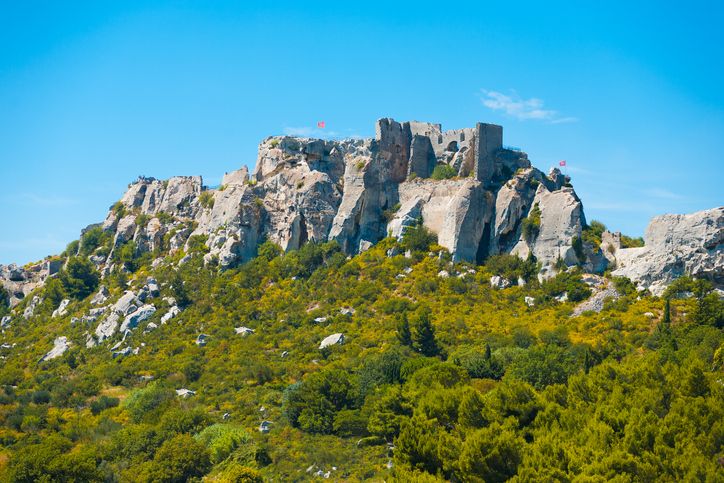
A South of France holiday isn’t just sunbaking and quaffing champagne in ritzy bars – although that’s a great way to spend a day. Beyond the bright lights of the French Riviera is a world of natural beauty. Rolling expanses of lavender stretch to the horizon, while cherry and apricot orchards jostle for space alongside sprawling olive groves. The best way to explore these lyrical landscapes is by car, driving along incredibly scenic clifftop roads, pausing by perfumed purple fields and tracing the foothills of snow-capped mountains.
History buffs should uncover the region’s past with a tour of the fortresses, Cathar castles and Roman remains. For action, there’s kayaking through France’s answer to the Grand Canyon, mountain biking the Luberon massif, and skiing the snow-blanketed slopes of the Alps.
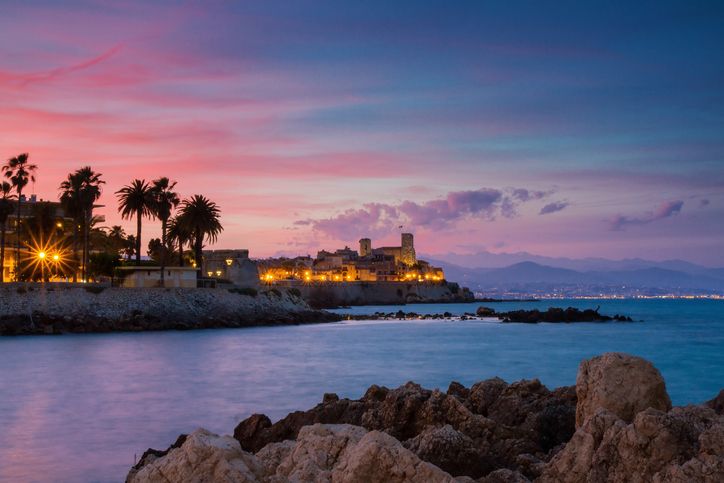
The South of France is peppered with ancient ruins dating back to when Provence was part of Roman Gaul. Loop around the historical remnants, from the remarkably intact amphitheatre in Arles to the fine theatre in Orange and the Roman town near St-Rémy-de-Provence. Don’t miss the Pont du Gard, an incredible Roman aqueduct built around 19BC, located near Nîmes – also home to an impressive amphitheatre and Roman temple.
Heading off the tourist trail unearths some unexpected sights. Rent a car to drive along clifftop roads and through maquis-carpeted hills, skirting past fruit orchards and olive groves. For fields of lavender, take Route de Manosque to carve through the purple-washed Valensole Plateau and continue to Sault, a sleepy town built into the lavender-planted Vaucluse hills.
Europe’s answer to the Grand Canyon, the teal-coloured Verdon Gorge cleaves between 700m-high limestone walls. Hire a kayak at the northern tip of the Sainte-Croix Lake and slowly paddle through the ancient gorge.
The South of France is a vast adventure playground. The glaciated Alps are a prime skiing destination in winter; come spring, the snow slips away to reveal a web of walking trails. Elsewhere, the Lubéron massif is not only a hiking hotspot; it’s also great for mountain biking, rock climbing and paragliding.
Visit the Camargue, Western Europe’s largest delta, to see white horses gallop across wild beaches and flamingos feed in reed-lined lagoons, to a soundtrack of trilling nightingales.
The sensual landscapes of the South of France offer an idyllic backdrop for the region’s towns and cities. Glitz and glamour come in the form of Cannes and St Tropez, the two favourites of the jet set. Away from the coast, medieval villages dot the peaceful hinterland – something of a blurred boundary between the Riviera and Provence.
Expect romance galore, from the honey-stoned hilltop town of Gordes and the old ramparts of Avignon, to the vine-cloaked village of Saignon in Luberon and the bougainvillea-filled streets of St-Paul-de-Vence.
While the belle-époque Promenade des Anglais of Nice lures many a traveller to the Bay of Angels, nearby Èze offers a peaceful hideout away from the lively capital. A scenic climb through steep streets leads to the medieval cobbled town, home to a 12th-century neoclassical church, perfume factory and botanical gardens with Riviera views.
Further south are the hidden treasures of Languedoc, from the picturesque squares of Béziers to the canal-threaded town of Sète. Our villas in the South of France are spread out among the main towns and lesser-trodden villages, so you can pick the best accommodation for your trip.
Hugging the shores of a saltwater lagoon, Sète is laced with canals including the Canal du Midi, which ends its 150 mile-long journey here from Toulouse. Expect a local feel and excellent seafood; restaurants in La Pointe Courte – the old fishermen’s quarter – serve up fresh sea urchins, sardines and cuttlefish.

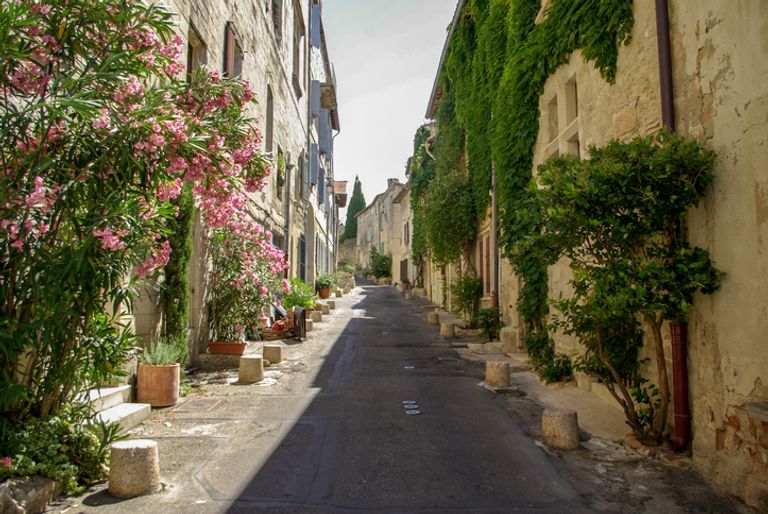
This Provençal town was the site of religious controversy back in the 14th century when Pope Clement V moved the seat of Roman Catholicism here from Rome. While the city was a site of papal power for just a few decades, a legacy of ecclesiastical architecture remains. Visit the UNESCO-listed fortress Palais des Papes for the most impressive example.
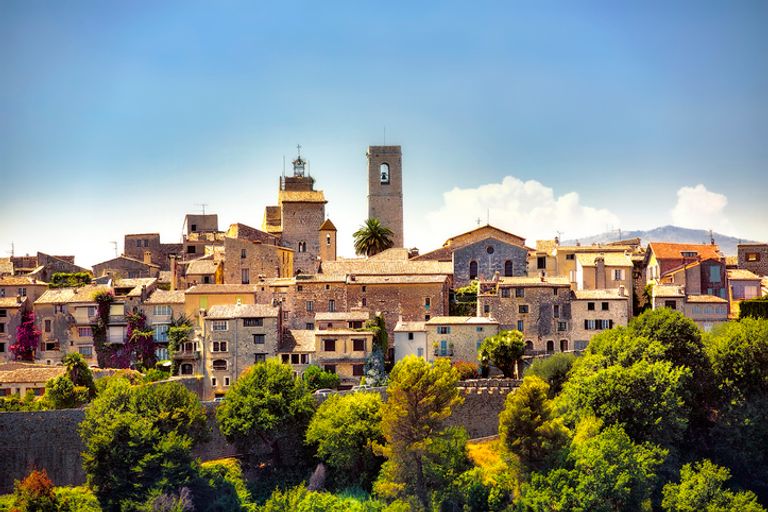
Climbing a hill, the narrow cobblestone alleyways of St-Paul-de-Vence are draped in bougainvillea and cloaked in trailing vines. This medieval town is a handy base for visiting the beaches and mountains, but be sure to spend at least one afternoon browsing its art studios and galleries and sipping rosé wine on the sun-soaked squares.
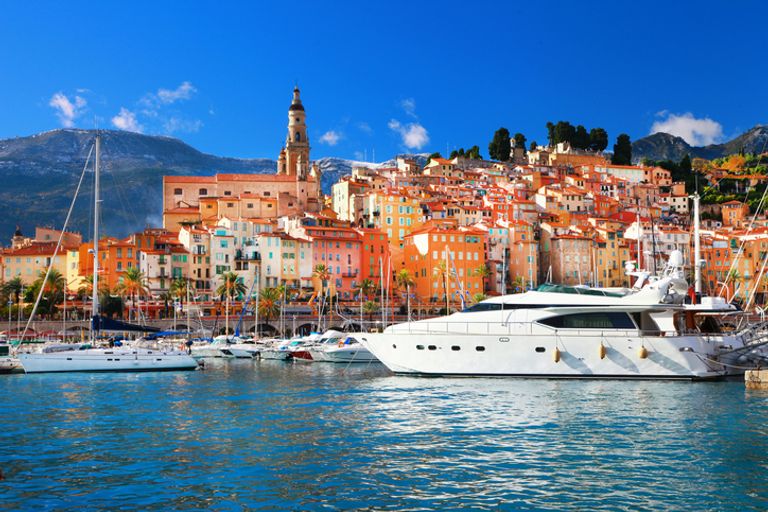
Ablaze with camera flashes during the film festival, Cannes is the poster child of Hollywood glamour. Ferraris purr through the boulevards, while yachts bob in the bay. Beyond the bright lights, the old town is a pretty tangle of narrow streets. Be sure to stroll the world-famous Croisette, lined with grand palaces and designer shops.
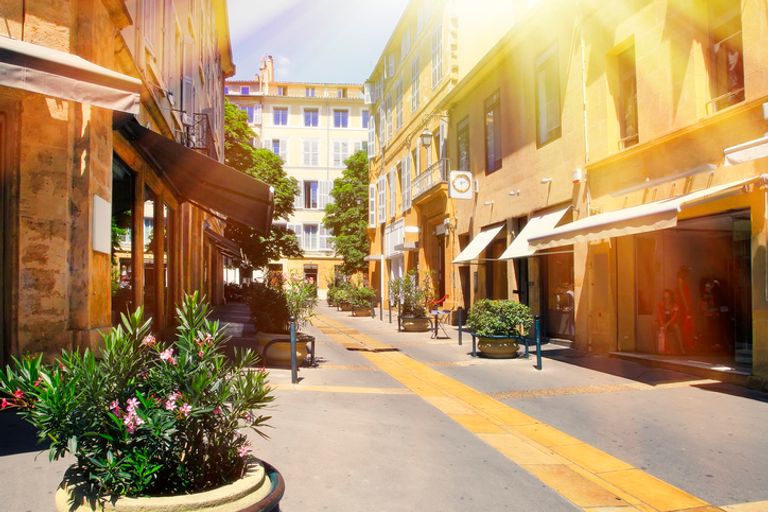
In the regional capital of Provence, leafy boulevards spill onto sun-dappled squares, lined with handsome mansions and bubbling water fountains. The grandest of the avenues, cours Mirabeau is peppered with pavement cafés where locals linger over glasses of chilled wine. A marvellous market competes with the town’s Michelin-starred restaurants for the attention of foodies.
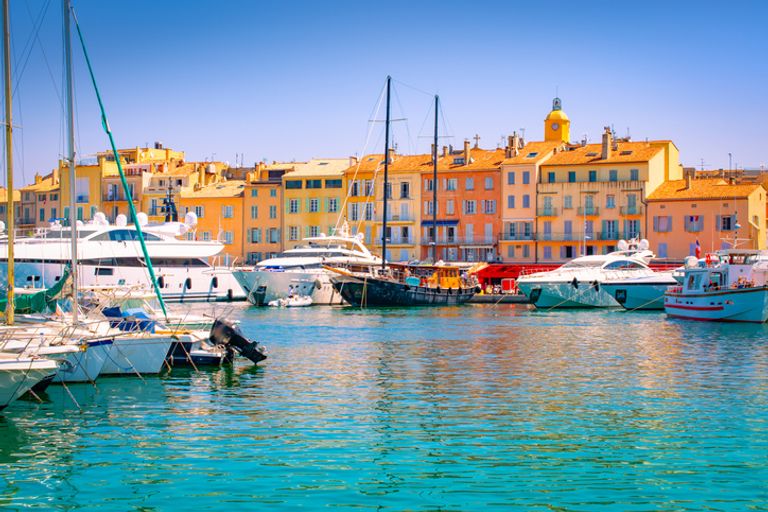
St Tropez has been the sizzling sojourn of choice for the jet set ever since Brigitte Bardot filmed And God Created Woman here in the Fifties. The sultry star transformed the sleepy fishing village into a star-studded enclave. Millionaires moor their super-yachts at the Vieux Port, and tourists clamour to gawp at them.

The capital of the Côte d’Azur is hooked around the Bay of Angels, fringed by the belle-époque Promenade des Anglais. The city has a thriving food and drink scene, with a cluster of renowned restaurants and bars. The medieval old town is a knot of winding streets, lined with tiny shops selling local oil and wine.
Excellent regional bus networks serve the main towns and villages.
TER (Regional Express Trains) connects the main destinations up to the Italian border.
Kids receive discounted train fares around the South of France.
To hire a boat or yacht to sail the French Riviera in style, check out Bespoke Yacht Charter.
In high season, consider trains and buses for travelling the Riviera to avoid traffic.
A scenic way to travel from Nice to Digne is by the Train des Pignes, which trundles up and over the mountains, skirting ridges and valleys.
There are four main airports in Provence served by the UK: Marseille is served by British Airways from Heathrow; by easyJet from Gatwick, Luton and Bristol; and by Ryanair from Stansted and Edinburgh. The average flight time is around two hours.
If you’re heading to the northernmost reaches of Provence, such as the Alps or Verdon Gorges, it may be easier to fly to Nice-Côte-d’Azur. British Airways runs services here from Heathrow, Gatwick and London City; Aer Lingus flies from Dublin; easyJet from Edinburgh, Belfast and Newcastle; Jet2 from Leeds-Bradford and Manchester; and Ryanair from Stansted and Dublin.
Nice is the gateway to the French Riviera. EasyJet runs several services to Nice from Stansted, Luton, Gatwick, Bristol, Edinburgh, Liverpool, Newcastle and Belfast. Alternatively, Jet2 flies from Leeds and Manchester; BA serves Heathrow and London City; Norwegian connects Gatwick; Monarch flies from Gatwick and Birmingham; and Flybe runs services from Southampton.
Eurostar offers a direct service from London to Lyon, Avignon (5hr 49mins) and Marseille (6hr 27mins).
Languedoc is served by five regional airports: Nîmes, Montpellier, Carcassonne, Perpignan and Béziers. Ryanair connects all five with a number of UK airports, while Flybe runs to Perpignan from Southampton, Bmibaby flies to Perpignan from Manchester, and easyJet flies to Montpellier from Luton and Gatwick.
Alternatively, you could catch the train from Paris Gare du Lyon, reaching both Nîmes and Montpellier in just over three hours; Béziers in just over four hours; and Narbonne and Perpignan in slightly longer.
If you’re heading to the remote corners of Languedoc or Provence-Alpes, where public transport can be hit and miss, we recommend hiring a car.
Car-rental services are located at most airports; rates are around £300 for a week.
Excellent regional bus networks serve the main towns and villages. If you’re heading inland from the Riviera, the Ligne d’Azur bus network fans out from Nice to Vence, Grasse, St-Jean-Cap Ferrat and Villefranche-sur-Mer.
For longer trips around France, LeShuttle and the TGV train system is fast, clean and reliable, with food carriages and tables.
To travel the Côte d’Azur by train, the TER (Regional Express Trains) connects the main destinations up to the Italian border.
The South of France, also known as the French Riviera (Côte d’Azur), is famous for its stunning beaches, luxurious lifestyle, artistic and cultural history, and excellent wines.
The region is home to some of the best rosé wines in the world, with vineyards dotted throughout the countryside. The wine regions of Provence, Languedoc, and Rhone-Alpes are particularly well-known for their high-quality wines. These wines are made from a variety of grapes, including Grenache, Syrah, and Mourvèdre, and are enjoyed by wine enthusiasts around the globe.
To fully explore the South of France and experience its attractions, we recommended spending at least a week in the region. If you’re interested in exploring the wine regions in-depth, two weeks may be needed as each wine region has its unique charm and attractions.
For sunshine and warm weather, it’s best to head to the South of France from May to September. To escape the crowds in July and August, go during June and September. If you’re in visiting the lavender fields, June and July are the best months to go.
The South of France can be expensive to visit, especially during the peak tourist season of July and August. If you’re on a budget, buying fresh from local markets and cooking up a storm can be a great way to save some cash. Additionally, using local public transport options such as trains and busses can be a great way of getting around and living like a local.
The South of France is the home of many beautiful areas, including the French Riviera, Provence, Luberon, Camargue, Rhone-Alpes, Languedoc, and Corsica. These areas offer a variety of attractions, from stunning beaches and picturesque villages to rugged mountains and unique wetlands.